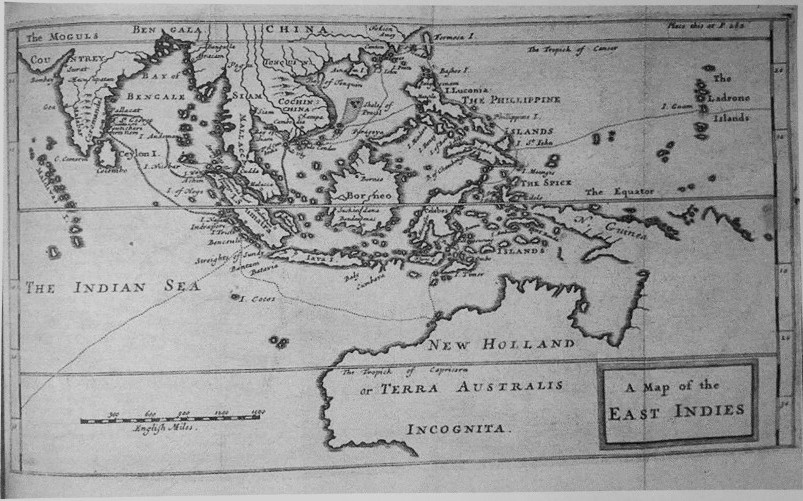
12. A LT.JAMES COOK. SAILOR and NAVIGATOR
DID NOT DISCOVER AUSTRALIA! But found and explored most of Australia's East Coast.
Before Captain Cook's Australian East Coast Survey
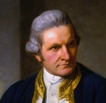 James Cook | 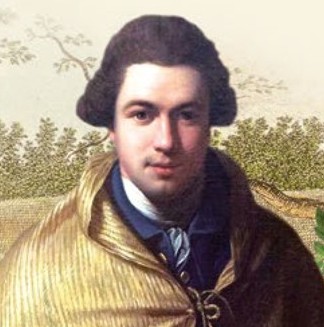 Joseph Banks |
|---|
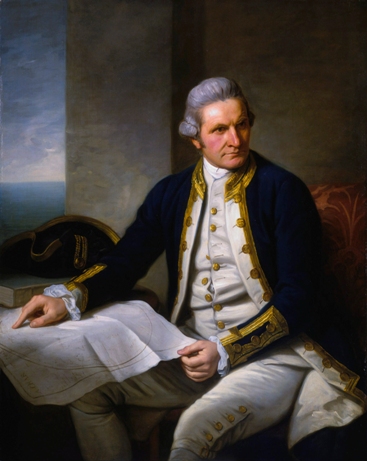
After the scientific expedition to observe the transit of Venus across the face of the Sun, his Expedition went southwards, then westward that led to the Exploration, and Charting of New Zealand and the East Coast of Australia.
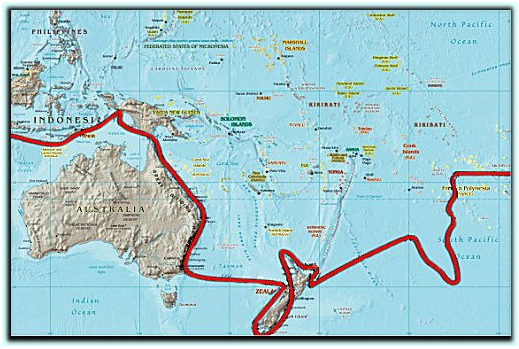
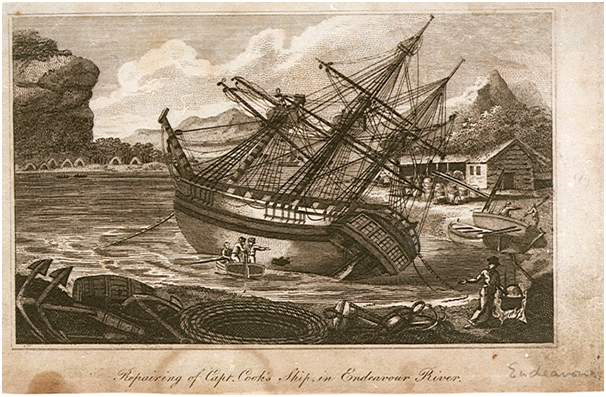
Who became a Powerful figure in English politics.
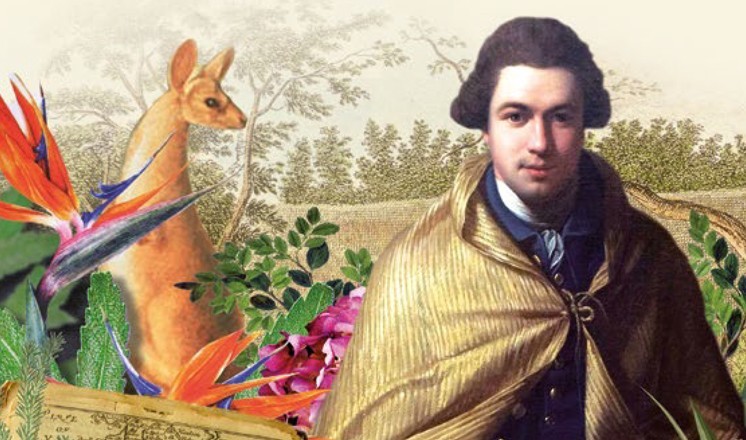
- 1. This comparison
2. Interesting Facts about Bank’s and Darwin
3. Summaries “about Cook and Fitzroy.
4. Calc, Lat. and Long?
|
JOSEPH BANKS age at voyage start 25 Born: 1743 died 1820 Did see a KANGAROO Always a persuasive and involved“Father” to Australia, in its early days. Persuaded the English Government that Botany Bay was suitable for an English Colony. Assisted and advised the first 4 Governors Philip – Hunter-King- Bligh. He pushed for the ‘breadfruit voyage.” He supported Bligh In the mutiny trial, and pushed for Bligh as Governor of Aust. |
CHARLES DARWIN age at voyage start 22 Born: 1809 died 1882 Did see a PLATYPUS Overall did not like Australia much, or the “wealthy”emancipated convicts. |
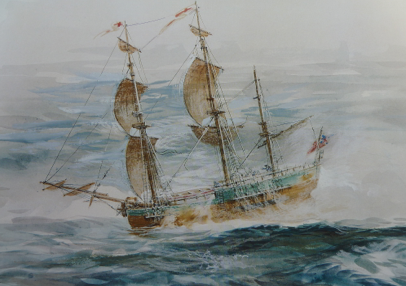
HMS Endeavour….Lieutenant Cook
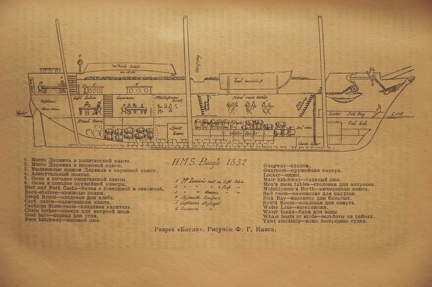
HMS Beagle….Captain Fitzroy.
INTERESTING FACTS regarding Banks and Darwin
Sir Joseph Banks
At 22 years old, he inherited a large estate, and the title Sir. All his life he was free to follow all his interests.
He went to Oxford University, as a gentleman commoner, and was primarily interested in Botany.
At 23 years old he and another companion visited Newfoundland and Labrador in the interests of Science. Lt.Cook would have known that area well.
The following year, he paid for his 10 retainers including the Royal Society Scientists on the Endeavor. A “voyage that was going to be better than touring Europe for a year or two,” his words. Probably at a cost of 10,000 pounds!
In Tahiti he followed the native custom and had tattoos.
For all the efforts of Cook, and his crew in building a small “fort” the Measurement of the Transit was a disappointing result……
He married but had no children. His sister lived with Banks and his wife.
He became President of the Royal Society for 41 years. In this position of great influence he became advisor to King George 3.
Anything to do with specific and general ideas on Australian development, including importing flora and fauna to and from Australia was his domain.
The London Gardens at Kew became his masterpiece. His legacy influenced the development of The Gardens at Cranbourne Victoria.
He was also elected to various European Societies of Scientific influence.
He took and active interest in George Vancouver, Mathew Flinders and George Bass as well as Lt. Grant on the Lady Nelson who was the first to sail from WA to Sydney without going around Tasmania.
Look up www.fatefulvoyage.com/2bligh/901024.h.t.m.l this is a respectful letter from Bligh to Banks, who was Bligh’s patron.
At one stage, as a respected member of the Royal Society, he challenged Cook for Overall Command of Cook’s second expedition to.confirm existence of the postulated Southern Continent. He did not go on further expeditions. It is interesting that Alexander Dalrymple whose maps of the Globe and as a member of the prestigious Royal Society also challenged Cook for Leadership of Cooks First expedition. The Royal Navy insisted a Navy person would Captain the voyage, not only because it was a Navy Ship/Crew, but also the secret orders to be opened after” The Transit.”
Banks also took a great interest in the British Governments unsuccessful attempt to open up China for British Trade.
He no doubt offered strong opinions.
After the Voyage, with Dr. Solander, he toured the Isle of Wight, Western Isles of Scotland and part of Iceland, collecting specimens.
He was a “Mover and Shaker” maybe not overly recognized in Australian history, for his vast influence in early Australian affairs.
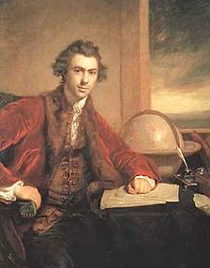
Banks just after voyage The Banks home.
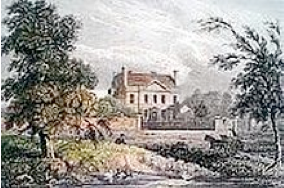
Banks in mature age Australian currency. Banks.
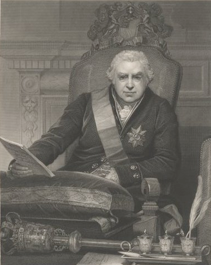
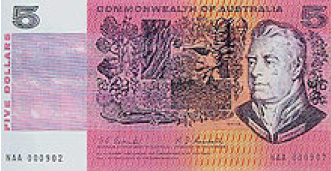
Banks in mature age. Australian currency. Banks.
Charles Darwin
He came from a Family with connections to the rich Wedgewood Family. As such he was free to follow all his interests but with due regard for money he spent. After Graduating at Cambridge University, he was primarily a Geologist, with a passionate interest in natural History. He was partly to be a companion for Capt. Fitzroy, over what was planned to be a very long time away from home. He was the third candidate and was highly recommended by John Stevens Henslow, Professor of Botany along with Adam Sedgwick Professor of Geology. On the Beagle’s first voyage its Captain Stokes had committed suicide. Fitzroy took over command. Fitzroy in a fit of depression actually “resigned in Sth America” on this the second voyage, but after some time resumed.
Two days after arriving in Sydney he set out to ride over the Blue Mountains to Bathurst NSW. Partly to “see the Geology and get a feel for the country.”
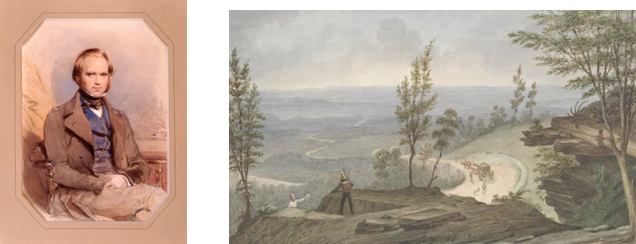
At Wentworth Falls and Govett’s Leap, he thought the mountains had been dug out with fierce rivers. However he later decided that erosion over a vast time frame was responsible. This added to his thoughts in “Origen of Species.”
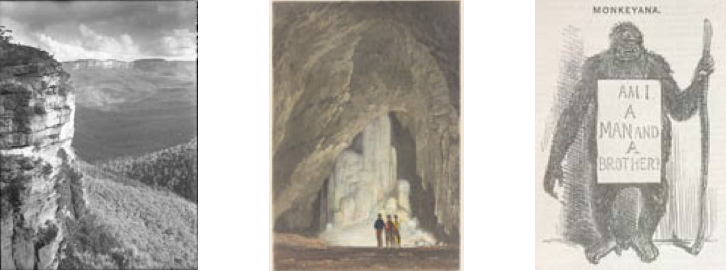
While in Sydney, Darwin used the discoveries of the explorer Thomas Mitchell. Mitchell had pointed out the absence of the Dingo in Tasmania, and analyzed the processes to be seen in the Wellington Caves of NSW.
Darwin believed that Mitchell’s finds in the Caves supported the idea of evolutionary change. Implying that one generation led to the next. Not extinction of one species followed by new creations.
In Sydney Darwin found the painter Conrad Martins had set up a shop. Martins joined the Voyage in Monte Vidao, but became sick on the voyage in South America and left the Beagle for another ship that was heading for Sydney. He became Darwin’s draughtsman after Augustus Earle had also become ill and left the ship in Sth America.
Syms Covington, a “fiddler and Boy to Poop Cabin (young servant) on the voyage became the man who shot and prepared birds, and foraged for flora and fauna, so that Darwin and others could dedicate themselves to examining and writing he objects. He eventually made Australia his home and became the Post Master at Pambula sth coast NSW. Darwin and Covington remained in touch by letters.
In Hobart, Darwin climbed Mt. Wellington. He intensely disliked Albany in W.A. It was a very “raw place” having been settled because the British wanted Occupied Ports all around Australia. He was invited to an aboriginal ‘corroberee.”
His next Landfall at the Keeling Islands, gave him proof that seas had diminished, a very time long ago.
The following statements were selected from Darwin’s personal diary.
Refer to the book “ Charles Darwin in Australia” authored by F.W. Nicholas and J.M. Nicholas
Italics are extractions from his Personal diary.
Personal thoughts
1-“Anchored in Sydney Cove, a little basin containing many large ships, and surrounded by Warehouses. On one point stood an insignificant Fort.”
2- “Population of Sydney 23 thousand, rapidly increasing. A man of business can hardly fail to make a fortune.”
3- “Whole population, poor and rich are bent on acquiring wealth….Must deteriorate and become like that of the United States.”
4- “Main exports are wool and whale oil.”
5- “with respect to the state of the convicts, real system of reform completely failed.”
6- “The most novel and not very pleasing object are the iron gang’s ; or parties of convicts.”
7- “but as a means of making men outwardly honest vagabonds into active citizens unparalled in history.”
8- “A Squatter, is a freed ticket of leave villain’… a Crawler is an assigned convict who runs away…A Bushranger is an open villain.”
9- “The balance of my opinion is such that nothing but rather severe necessity should compel me to emigrate.”
10- He found Hobart “very inferior to Sydney. All aborigines had been removed to an Island in Bass’s Straight.”
11- “Hobart better class of society than Sydney. No convicts driving in their carriage’s and reveling in their wealth. He attended a large Dancing Party where 96 attended.”
10- “Farewell Australia. You are a rising infant, doubtless some day reign as a great princess in the south. Too great and ambitious for affection. I leave your shores without sorrow or regret.”
11- At a later age he wrote “I assure that whilst I am a rich man, when I think of the future, I ardently wish I was settled in one of our Colonies. I now have 4 sons ( 7 children at that stage) and more coming, what on Earth to bring them up to I do not know.”
Things he did.
1-He rode to Bathurst to “see the countryside and …people.” Darwin complained about the cost of his ride to Bathurst, using a Guide and 2 horses. “ where he visited a great pastoral property of “15,000 sheep grazing over 100 miles.” He also visited the Army Barracks and fraternized with other gentry.
2- He noticed the effects of ‘bush fires.” “ I scarcely saw a place unaffected.” ‘Too dry to support any agriculture except for raising sheep.”
3- At Wallerawang NSW, he observed a special kind of ant and compared it to a European equivalent. Saw the “platypus.”
4- He fraternized with Hannibal Macarthur and other landed gentry, who lived in the surrounds to Sydney.
5- He paid 2 visits to the Cascade at Wentworth Falls as well as Govett’s Leap. On the way , and on the return from Bathurst.
6- In Hobart he was pleased to report to his sister” I did not draw any money whilst at Hobart.”
7- He took a stage coach to “New Norfolk a village by then of 1822 inhabitants. Nice farms and much corn land.”
8- At King George Sound WA, he stayed 8 days. “dull and uninteresting time.” At the time, before the Swan River settlement, it was to prevent the French from annexing the southern part of Australia “The settlement did not even carry out fishing….” At this point of the expedition The Beagle Still had half the Globe to go before being home!.
Evolution studies.
- Darwin did not follow up on Aboriginal statements that the Platypus laid eggs. That was resolved in 1884.
- The “Blue Mountain valleys and cliffs, after much thought, helped advance his “theory regarding evolution.”
Brief Summary of Lt. Cook and Capn. Fitzroy.
It was almost as if Cook and Fitzroy complemented each other.
Cook’s daring sailing and navigation skills allowed Fitzroy to complete the navigation square’s by taking longitudes around the World
Lieutenant Cook. HMS ENDEAVOUR.
It was his time in America fighting the French and mapping the St. Lawrence river that brought him to the attention of higher ups in the British Navy. He was given command of the Endeavour because of his unique ability to command men—navigate and draw maps. Some one, some where, must have recognized Cook as an extra ordinary person and decided to aid and promote him in the English world of the time.
On his first voyage he was instructed to sail to the recently discovered Tahiti, and observe the transit of Venus across the face of the Sun. an event that was predicted to occur on 3 June 1769. In his secret orders he was then to “search” for the legendary Southern Continent that drawn on the Alexander Dalyrmple ( a member of the Royal Society) map of the world. His map was based upon Dutch, Portuguese and Spanish sailors as well as the Englishman William Dampier who landed on the West Coast of Australia twice. Abel Tasman the Dutchman, by finding part of Tasmania and part of New Zealand in 1643 aided the confusion. The western coastline of Australia to roughly the vertical middle of Australia was known at that time.
On that First voyage was Lt. Zachary Hicks “ the first to see the eastern Coast of Australia, and who died of fever at Dutch Batavia. Also Lt. John Gore an American serving in the English Navy. Gore had served on HMS Dolphin , who had docked 2 weeks prior to the Endeavour leaving, with the news of the discovery of Tahiti. The Admiralty quickly decided Tahiti was the place to observe the Transit.
Cooks wife died at 92, none of their family survived. She saw off the First Fleet to Australia. She destroyed all correspondence from Cook.
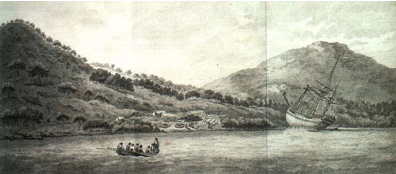
The Endeavour beached at today’s Cooktown. Nth QLD, The grounding on a sharp rock, followed by “fothering” the hole with a sail and glued straw, resulted in the Endeavour being put on its side in the river. However outside at sea was a labyrinth of dangerous reefs.
The danger period where they thought they might die, lasted probably as long as two months. In a far off place, that no one had seen before.
Captain Fitzroy. HMS BEAGLE
This was his second voyage in the Beagle. This time as Commander. The first time was in consort with another ship. Overall Command was then under Captain P. King, the grandson of Australia’s 3rd Governor and was born at Parramatta.NSW. King’s son was a midshipman on this voyage.
Fitzroy’s job, with the help of 22 clocks, was to take longitude bearings, at as many places as possible around the world at the orders of Navy Captain Thomas Beaufort.. He was also to complete the mapping of the Southern part of South America.
The decision to sail to Sydney, Hobart and the colony at King George Sound WA, was because they were important reference points of Longitude determinations, that the Admiralty wished to note..
The so named Beaufort scale indicates the wind and sea strength in the worlds oceans. Fitzroy started publishing “Weather Forecasts.”
Originally Fitzroy and Darwin were firm friends. But in later life when Darwin published and defended his “Origin of Species” Fitzroy who was a firm Christian Fundamentalist attacked Darwin at Public Meetings and in the Press.
Fitzroy later became High Commissioner of New Zealand. He had an unfortunate time in the Maori Wars in New Zealand and was replaced.
As a Vice Admiral he became very important in “weather prediction. He invented a ‘barometer’ that was soon distributed widely. He also made use of the newly invented “telegraph” system to obtain weather reports from many areas. Always a “troubled Man” as Darwin and others could testify, he committed suicide at the end of an eventful career.
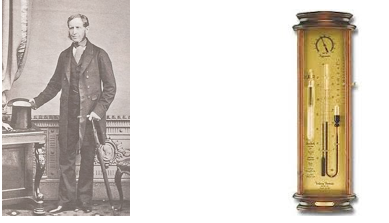
Fitzroy in later years. A “Fitzroy’ barometer?.
Want to Calculate Lattidude and Longitutde ????
The belief since Ancient Greek times, that like an egg, without a Large Southern Landmass, the World would topple over. How that related to “The Flat Earth” where you could go so far then fall off the edge like a giant cliff aided the “mysteriousness of the globe.” Middle age Astronomers were starting to “prove” our Universe.
If you want to divide the Globe into small adjacent oblong boxes 3 assumptions are apparent!
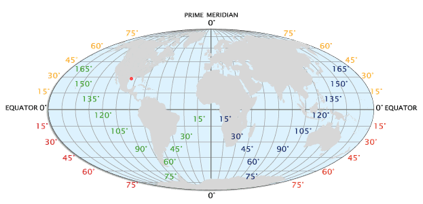
- On a Daily basis, the Sun appears to the East and disappears to the West on a 24 hour basis. Our Earth rotates around our Sun every 24 hours.
- Using an instrument called a Sextant the height of the Sun in 1 mirror, reflected onto another mirror when looking at the Horizon at MIDDAY And using “mathematical tables, you can find the :latitude.
- You will be using a clock set to Greenwich mean time, and another set at midday EXACTLY when the sun is at its highest point wherever you are. You can find the “Longitude”
Look up “Wikipedia” on the net to find out exactly “how to do it.”.
Click Here to Download a PDF of this Short Story.
